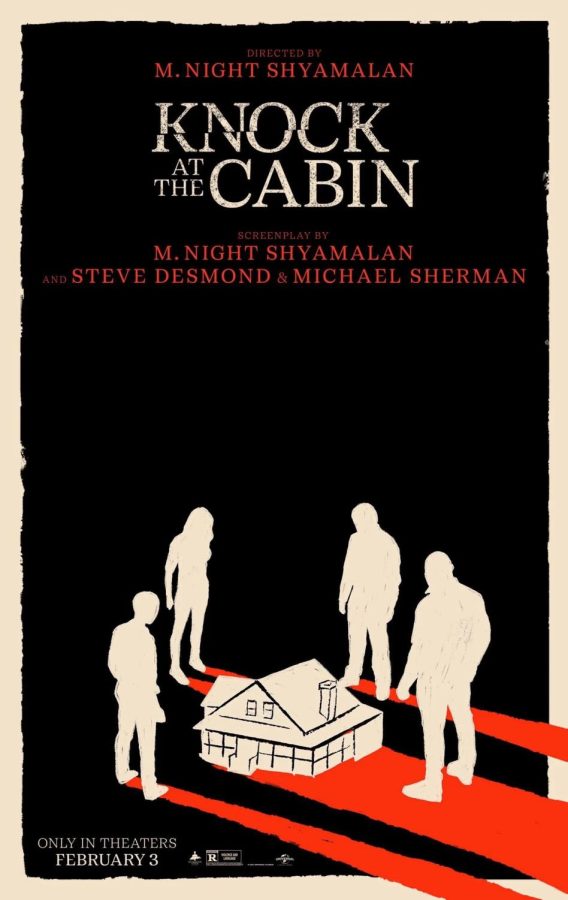Much to “Knock”: Cast Carries “Knock at the Cabin”
Save your family or save humanity. What choice would you make?
Night Shyamalan’s new film, “Knock at the Cabin”, follows a family that has been taken hostage by four strangers who claim to have seen visions from an apocalyptic future. The leader of the strangers, Leonard (Dave Bautista) tells two husbands, Andrew and Eric (Ben Aldridge and Jonathan Groff), and their daughter, Wen (Kristen Cui), that one of them has to be sacrificed to save the world.
“My movies tend to be about characters that come to realize they’re meaningful in some way,” Shyamalan said to “Time”. “That there’s a greater thing going on that they’re a part of.”
Shyamalan has been criticized for his use of close ups in his past movies, especially in his adaptation of Avatar: The Last Airbender. Shyamalan often puts the camera very close to his performers, which can create an uneasy feeling for the viewers. These types of shots make up most of “Knock at the Cabin”, but the congestion feels appropriate this time around, as the characters are all trapped in a cabin. As the film progresses, the tight close-ups make the walls of the cabin feel as though they are closing in on the characters, enhancing the claustrophobic feel for the audience.
“If you think about the language of cinema and wide shots, mid-shots, and then close-ups, they are different ways that the characters are interacting with their environment,” Shyamalan told “Collider.”
“Knock at the Cabin” is driven by its acting with clear indicators that Shyamalan works closely with the cast. While most of the performers play a convincing role, Dave Bautista stands out from the rest. Other actors might play the kidnapper role as a purely antagonistic figure, yet Bautista brings a vulnerability to the character that is desired in a film with more complexity. His character actually seems calm, collected, and kind, which highlights the juxtaposition between his attitudes and actions, making Leonard’s temperament even more unsettling.
While his cinematography is a unique aspect of his directing style, the most memorable parts of Shyamalan’s films are his twist endings. Not all of his twists work–a good chunk of them don’t make any sense–but they are bold.
There was an expectation that the ending of “Knock at the Cabin” would let in that same unwelcome visitor. Even before the film was released, people were trying to predict what the fatalistic twist would be, making the lack of alteration all the more shocking to the audience. Surprisingly, the absence of a twist is the twist itself.
While there is much to praise about “Knock at the Cabin”, there are also a few things that continue to plague the stereotypes of solicitation. Though the actors try their best to salvage it, the dialogue is a bit unusual. Every character is under immense pressure throughout the film, but they don’t really convey the stress like viewers would expect. Most of the lines are these perfectly articulated, but unnatural sentences, that feel right for Leonard and his group but not the stressed family that they’ve kidnapped.
Though the film falls short in some aspects, there are details that should still be appreciated. Shyamalan is a very talented filmmaker. Not all of his ideas end up reaching their full potential (as with much of this film), but someone as bold and creative as Shyamalan should be appreciated and celebrated, especially in Hollywood’s otherwise creative draught.



